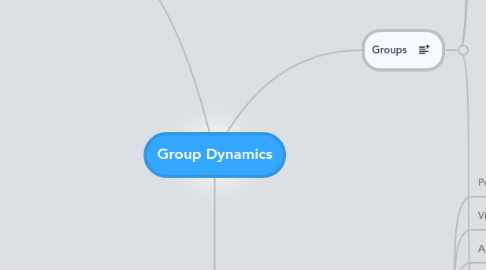
1. Conflict
1.1. Detrimental When..
1.1.1. Inhibits you from doing your work
1.1.2. Threatens the integrity of a relationship
1.1.3. Endangers the life of a relationship or your ability to sustain it
1.1.4. Prompts a person to abandon a relationship or recede from social life
1.2. When Healthy...
1.2.1. permits the open exchange of contrary viewpoints.
1.2.2. Results in change
1.3. Internal conflict
1.3.1. Approach/Approach
1.3.1.1. Definition
1.3.1.1.1. tension resulting from the equivalent appeal of Two options
1.3.1.2. Resolution
1.3.1.2.1. Deciding on one course of action or another
1.3.2. Avoidance/Avoidance
1.3.2.1. Definition
1.3.2.1.1. Tension resulting from the equivalent repulsion of two outcomes
1.3.2.2. Resolution
1.3.2.2.1. Declining one option commands that you accept the other. if there is no obvious resolution, you may put off dealing with the conflict; highly stressful cases, you could be rendered powerless
1.3.3. Approach/Avoidance
1.3.3.1. Definition
1.3.3.1.1. The tension resulting from the simultaneous attraction and repulsion to the same issue
1.3.3.2. Resolution
1.3.3.2.1. Has both positive and negative consequences, resolution achieved by weighing pros and cons and committing to a decision
1.3.4. Multiple Approach/Avoidance
1.3.4.1. The tension resulting from two or more choices each with compelling positive and negative attributes
1.3.4.2. Resolution through making a commitment to a particular course of action, even though it may generate nagging wonder over the road not traveled
1.4. Group Conflicts
1.4.1. 1. Direction
1.4.2. 2. Allocation
1.4.3. 3. Verdict
1.4.4. 4. Conduct
1.5. Conflict Management
1.5.1. Competition
1.5.2. Avoidance
1.5.3. Accomidating
1.5.4. Compromise
1.5.5. Collaboration
2. Groups
2.1. Purposes
2.1.1. Mandated participation i.e. military draft
2.1.2. Connection with members i.e. sorority or fraternity
2.1.3. Endorsement of objectives i.e. nonprofit or political organizations
2.1.4. Identity or association bestowed i.e. religious congregations
2.1.5. Anticipated networking possibilities i.e. input groups
2.2. Advantages
2.2.1. Risky Shift Phenomenon
2.3. Disadvantages
2.3.1. Groupthink
2.3.1.1. Reiterate following facts to the group in order to prevent Groupthink.
2.3.1.1.1. Groupthink stems from a great pressure to conform to a groups ideas
2.3.1.1.2. Valid challenges can always be posed to a group's ideas
2.3.1.1.3. Disagreement is acceptable
2.3.1.1.4. Even sincere group cohesion can be responsible for groupthink
2.3.1.2. Pollyanna-Nietzsche Effect
2.3.1.2.1. Pollyannaism
2.3.1.2.2. Nietzscheism
2.3.1.3. Group members must stay involved and alert, monitoring the effects of what they have set in motion. Adjustments must be made quickly if processes malfunction.
2.4. Group Personalities
2.4.1. Initiator/contributor
2.4.1.1. Presents new ideas or perspectives
2.4.2. Information Seeker
2.4.2.1. Asks for facts and clarification
2.4.3. Opinion Seeker
2.4.3.1. Asks for opinion to survey general climate
2.4.4. Information Giver
2.4.4.1. Supplies facts and opinions
2.4.5. Opinion Giver
2.4.5.1. Imparts values and opinions
2.4.6. Elaborator
2.4.6.1. Provides references and explanations, often building on contributions of others
2.4.7. Coordinator
2.4.7.1. Identifies the connections between ideas
2.4.8. Orienter
2.4.8.1. Clarifies ideas by integrating them with the groups focus
2.4.9. Evaluator
2.4.9.1. Analyzes the group's decisions
2.4.10. Energizer
2.4.10.1. Stimulates the group to higher productivity
2.4.11. Procedural Technician
2.4.11.1. Handles mechanical tasks such as supply distribution and physical accomodations
2.4.12. Recorder
2.4.12.1. Chronicles the group's decisions
2.4.13. Encourager
2.4.13.1. Gives positive reinforcement to group members
2.4.14. Harmonizer
2.4.14.1. Mediates group conflict
2.4.15. Compromiser
2.4.15.1. Attempts to resolve conflicts within the group
2.4.16. Gatekeeper
2.4.16.1. Keeps channels of communication open by supporting discourse
2.4.17. Standard Setter
2.4.17.1. Establishes group norms and accepted patterns of behavior
2.4.18. Composite Breakdown
2.4.18.1. 90% Are reasonable to work with most of the time
2.4.18.2. 9% Somewhat difficult to work with
2.4.18.2.1. Aggressor
2.4.18.2.2. Blocker
2.4.18.2.3. Recognition Seeker
2.4.18.2.4. Playboy/Girl
2.4.18.2.5. Dominator
2.4.18.2.6. Help Seeker
2.4.18.2.7. Special-Interest Advocate
2.4.18.3. 1% Impossible to work with -- their obstinate nature prevents any attempts to adapt to a cooperative setting
2.4.18.3.1. 1. Expel the from the group
2.4.18.3.2. 2. Ignore them
2.4.18.3.3. 3. Recognize that they have a right to contribute, yet others have theright not to listen
2.4.19. Tactics to help salvage production
2.4.19.1. 1. Do not placate the troublemaker.
2.4.19.2. 2. Refuse to be pressured into retaliation.
2.4.19.3. 3. Try to convert the disruption into something constructive.
2.4.19.4. 4. Confront the difficult person directly.
2.4.19.5. 5. If all else fails, separate yourself form the difficult person.
3. Leadership
3.1. Leadership Qualities
3.1.1. Prior Leadership Experience
3.1.2. Vision Creation and Passion
3.1.3. Appreciation for Challenge
3.1.4. Constructive Discontent
3.1.5. Dissatisfaction with the Status Quo
3.1.6. Practicality
3.1.7. Willingness to Take on Responsibilities
3.1.8. Dilligance
3.1.9. Rationalty
3.1.10. Admiration of Peers
3.1.11. Charisma
3.2. Leadership Incentives
3.2.1. Knowledge
3.2.2. Reward
3.2.3. Pride
3.2.4. Acceptance
3.2.5. Status
3.3. Leadership Styles
3.3.1. 1. Authoritarian
3.3.2. 2. Democratic
3.3.3. 3. Laissez-faire
